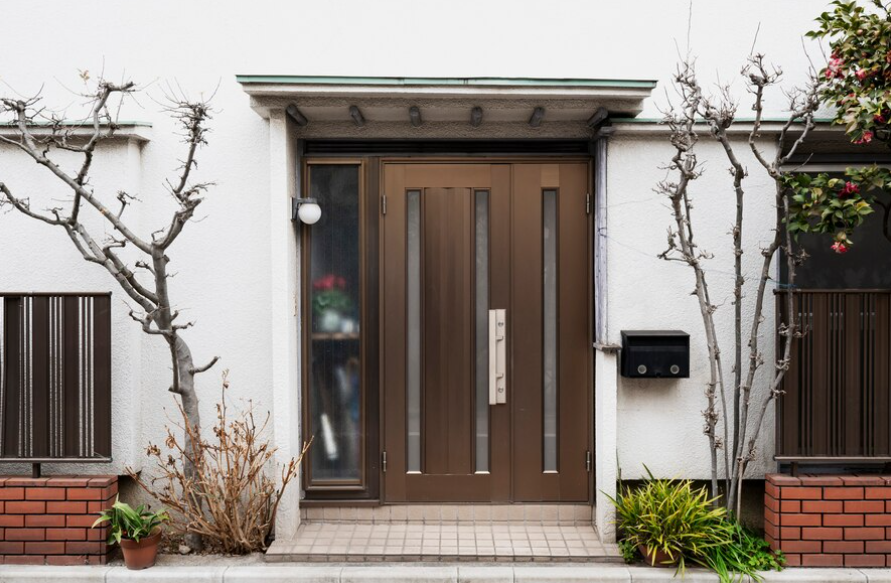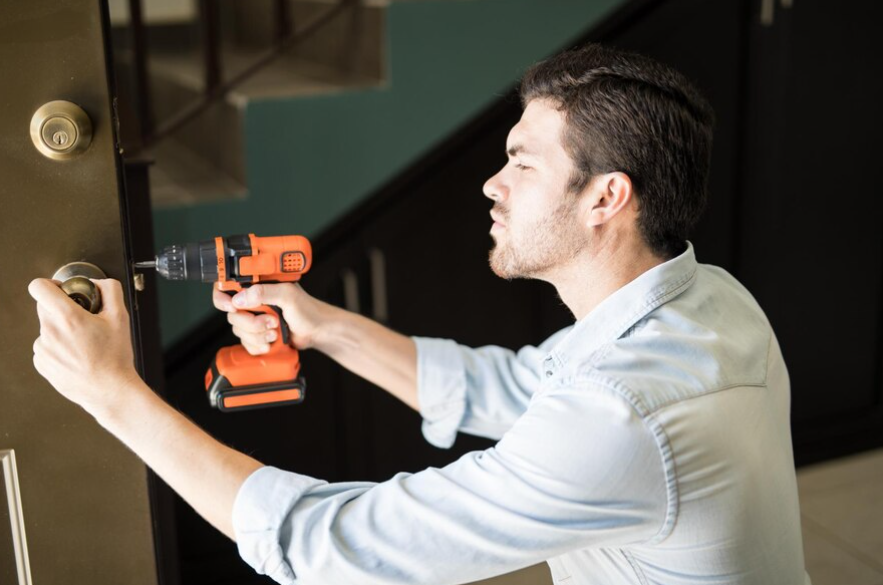
Composite doors offer homeowners the perfect choice for home security and aesthetics. With their stylish designs and robust construction, these doors blend beauty and strength seamlessly.
Manufacturers craft composite doors using a combination of materials such as wood, uPVC, and glass-reinforced plastic (GRP), ensuring durability and long-lasting performance.
Composite doors resist warping, cracking, and fading, ensuring their pristine condition for years. They not only provide excellent security but also offer exceptional energy efficiency.
Their multi-layered structure and insulating core keep homes cozy and reduce energy bills by preventing heat loss. Homeowners can customize their entrances with composite doors, available in a wide range of designs, colors, and finishes to perfectly complement their property’s style, from traditional to contemporary.
Investing in a composite door enhances the curb appeal of your home and provides peace of mind, knowing you have a secure and stylish entrance that withstands the test of time.
Advantages of Composite Doors Over Traditional Doors
Composite doors outperform traditional doors in several ways. Firstly, their construction using multiple materials enhances durability and resistance to wear and tear. Unlike wooden doors prone to warping or cracking, composite doors maintain their integrity and appearance over extended periods.
Moreover, composite doors boast enhanced security due to their robust construction and advanced locking systems. Engineered to withstand forced entry attempts, they provide homeowners with peace of mind.
Additionally, composite doors excel in energy efficiency. Their multi-layered structure, coupled with an insulating core, effectively retains heat in winter and prevents heat from entering in summer. This translates to reduced energy consumption and lower utility bills. In summary, composite doors offer superior performance, security, and energy efficiency compared to their traditional counterparts.

Types of Composite Doors
Composite doors offer a plethora of styles to cater to diverse architectural designs and personal preferences. One widely favored type is the solid composite door, characterized by a robust core enveloped in a composite skin. Renowned for their durability and strength, these doors come in an array of colors and finishes, allowing homeowners to personalize their entrances.
Another popular variant is the glazed composite door, featuring one or more glass panels. Ideal for those seeking to maximize natural light without compromising security, these doors are available in various designs, including full-length glass panels, half-glazed panels, and decorative glass inserts.
Composite stable doors present yet another option, divided into two sections that can be operated independently. Perfect for households desiring fresh air while ensuring the safety of pets or children indoors.
With a multitude of composite door types on offer, homeowners can effortlessly find the ideal style to elevate both the aesthetics and functionality of their homes.
Factors to Consider When Choosing a Composite Door
When selecting a composite door, several factors merit consideration. Firstly, prioritize the door’s security features. Seek out doors equipped with advanced locking systems like multi-point locks and anti-snap cylinders to ensure optimal security.
Additionally, assess the door’s insulation properties. Opt for doors boasting high thermal efficiency ratings to keep your home warm and minimize energy usage. Equally important is the door’s style and design. Choose a composite door that harmonizes with your home’s architectural style and aligns with your personal taste.
Explore the available color, finish, and glazing options to discover a door that enhances your property’s curb appeal. Lastly, factor in your budget. While composite doors offer excellent value, ensure your chosen door falls within your budget constraints without compromising on quality or security.
By thoughtfully weighing these factors, you can confidently select a composite door that fulfills all your requirements.
Composite Door Installation Process
The installation process of composite doors plays a crucial role in ensuring their proper functioning and longevity. We recommend hiring a professional installer experienced in fitting composite doors. The process typically involves the following steps:
First, the installer removes the old door and inspects the opening for any necessary repairs or damage. Next, they measure the opening to ensure the correct size of the composite door. Once the measurements are taken, the installer prepares the door frame by cleaning and leveling the surface. Then, they carefully fit the composite door into the frame to ensure a tight and secure fit, making any necessary adjustments to ensure smooth opening and closing.
Finally, the installer checks the door for proper alignment and installs all hardware, such as handles and locks. It is important to follow the manufacturer’s instructions and guidelines during the installation process to guarantee the door’s performance and warranty.
Maintenance Tips for Composite Doors
Regular care and cleaning are essential for maintaining the longevity and beauty of your composite door, designed to be low maintenance. Here are some maintenance tips:
Firstly, regularly wipe down the door with a soft cloth or sponge dampened with warm, soapy water. Avoid abrasive cleaners or materials that may scratch the surface. Pay special attention to the edges and corners of the door. Rinse the door with clean water and thoroughly dry it to prevent water spots or streaks.
Additionally, lubricate the moving parts, such as hinges and locks, with a silicone-based lubricant to ensure smooth operation. Regularly check the weatherstripping around the door and replace any damaged or worn-out seals to maintain energy efficiency.
Finally, avoid slamming the door or placing excessive weight on it, as this may cause damage. By following these simple maintenance tips, you can keep your composite door looking and performing its best for years to come.
How to Enhance the Security of Your Composite Door
Although composite doors inherently offer security, you can enhance their safety further with additional measures. Firstly, consider upgrading the door’s locking system by installing a multi-point locking system that engages multiple points along the door frame, making it much more difficult for intruders to force the door open.
Additionally, consider fitting an anti-snap cylinder on the lock to prevent tampering or breakage attempts. It is also recommended to reinforce the door frame and hinges to make them more resistant to forced entry. Another effective security measure is to install a door viewer or peephole, allowing you to see who is outside before opening the door.
Consider fitting a security chain or bar as an extra layer of protection, allowing you to partially open the door while still maintaining security. Finally, consider installing security lighting and a CCTV system near your entrance to deter potential intruders. Implementing these security measures ensures you make your composite door even more secure and provide added peace of mind for you and your family.
Popular Composite Door Designs and Styles
Composite doors present a wide range of designs and styles to suit various architectural preferences and personal tastes. One popular design is the traditional composite door, which boasts a classic paneled design reminiscent of traditional wooden doors.
These doors offer various finishes, such as oak or mahogany, to replicate the appearance of real wood. They often incorporate decorative glazing and intricate detailing, enhancing the elegance of any home. For those favoring a contemporary look, modern composite doors are available.
These doors feature sleek lines, minimalist designs, and bold colors, making them ideal for modern and minimalist homes. They frequently include large glazing areas, allowing ample natural light and creating a sense of spaciousness. Another sought-after style is the cottage-style composite door, which exudes a rustic and charming aesthetic.
These doors often showcase a stable door design or include decorative panels and leaded glass inserts, adding character and warmth to any cottage or country-style home. With the extensive variety of designs and styles on offer, homeowners can discover a composite door perfectly matching their home’s architectural style and personal preferences.
Composite Door vs. uPVC Door: Which is Better?
When deciding between a composite door and a uPVC door, consider several factors. Both types of doors have their own advantages and considerations. Composite doors boast superior strength, durability, and security.
They are constructed using a combination of materials, making them more resistant to wear and tear compared to uPVC doors. Additionally, composite doors offer better insulation properties due to their multi-layered structure and insulating core, resulting in reduced energy consumption and lower heating bills.
Conversely, uPVC doors are more affordable and require less maintenance compared to composite doors. They are also available in a wide range of colors and finishes, enabling homeowners to customize their entrance. However, uPVC doors may not provide the same level of security and insulation as composite doors.
Ultimately, the choice between a composite door and a uPVC door depends on your specific needs and preferences. Consider factors such as security, energy efficiency, maintenance, and budget to make an informed decision.
